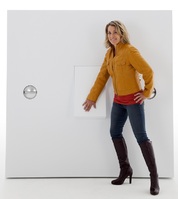Nation in the dark about energy guzzlers at home

New research from LED Hut has found that Brits are completely in the dark about which home appliances are guzzling the most power.
Whilst almost two thirds of us think we know what’s costing us the most on our electricity bills, our perceptions are worryingly far from the truth.
Almost half the population believes lighting is the very smallest contributor to our electric bills, when in fact, it’s the second biggest – and just one per cent behind our permanently switched on fridges and freezers. People also believe that cooking and washing clothes is costing them more than freezing food or leaving lights on, when in fact it’s the other way round!
The research comes as property guru Sarah Beeny launches the ‘Savvy Switch’ campaign – urging 1 million households to make the simple switch to eco-friendly, money-saving LED light bulbs this winter – a move that could see an incredible saving of more than £8bn on electricity bills and 5m tonnes of CO2.
She says: “With energy bills continuing to soar, it’s time people become savvier in the home. The campaign is urging us all to become more energy conscious in our everyday lives, and highlights how small, simple changes like switching our light bulbs can make a huge difference - not just to our wallets, but to the environment too.”
The new research revealed that more than three quarters of Brits are completely unaware that they could be spending x10 too much on their lighting bills, and could save a massive 90% by simply replacing traditional bulbs with LEDs. A typical home replacing standard 50W halogen spotlights with LEDs could make monthly savings of around £30 (enough for a gym membership), yearly savings of £350 (enough for the latest iPad 2) or an incredible total of £8,250 over the bulbs’ lifespan (enough for a two-week all-inclusive family holiday to Barbados!).
Says Sarah: “These savings are enormous, and if we can get 1 million homes, maybe even more, to make that all important switch, then collectively we’d be able to save millions on our electric bills each year – while helping contribute towards a more eco-friendly future at the same time. The potential is massive, but until now people have been completely in the dark about the savings they could be making.”
Adds LED Hut’s Keith Scott: “People genuinely don’t realise how much inefficient lighting is costing them, or that they could be saving hundreds year-on-year from a simple light bulb switch. With today’s energy prices, we think that’s something worth knowing!”
Unlike traditional bulbs, which lose most of their energy through heat, LEDs use a massive 90% less energy. They also boast an incredibly long lifespan providing 50,000 hours of quality light. “This is another reason to make that switch,” says Keith. “Almost 50% of Brits are spending time, effort and money changing light bulbs each month, when they could be fitting LEDs once and enjoying more than 20 years of quality light, along with continuous energy savings.”
LED bulbs emit the same light quality and intensity you would expect from a standard bulb or halogen, reaching full brightness at the flick of a switch. They can be used with any typical light fitting and come in all variants, from standard bulbs to spotlights, strip lights, and floodlights. Whilst they do cost more upfront, LEDs will typically pay for themselves in less than six months(8) and will continue to save you 90% on your lighting bills thereafter.
Adds Sarah: “My advice when buying items for your home is try not to sacrifice on quality in the search for the best low cost deal. Ultimately you want things to last longer and do a better job in your home, so it often pays to invest more upfront. Just as with LEDs, you will reap the rewards in the long run.”
For more information on how you can make the Savvy Switch, visit ledhut.co.uk/savvy-switch.
Sarah’s savvy tips to cut energy bills at home:
1. Make Savvy Switches:
As well as switching to energy efficient LED bulbs, make other small but savvy changes around the house. Try a water-saving showerhead, get round to sorting that dripping tap!, only boil the water you need in the kettle, fill up dishwashers & washing machines, don’t leave phones on charge overnight – the list is endless, but it all adds up!
2. Switch Off and Save!
It sounds so simple, but you could be making significant savings by just remembering to turn off appliances, lights, chargers etc. when you’re not using them, so don’t forget
3. Turn your heating down
Even if you reduce the temperature by just one degree – it’ll make an impact on your heating bill. Also, go back to basics and make sure you wear jumpers and socks on cold days rather than cranking up the heating
4. Insulate
Keep heat in your home and don’t let it escape! This means draught-proofing around doors and windows and other gaps around the house. I always advise people to interline their curtains – it’s a quick and effective way to conserve heat
5. Buy smart
When you’re buying new appliances for your home, try and pick energy efficient models. The more efficient the appliance, the lower your running costs will be. Remember, the cheapest item in the shop won’t necessarily be the cheapest to operate in the long run

